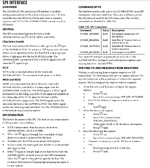uranyumx
Advanced Member level 4
Hello,
On my custom designed PCB, there is an AD5940 for impedance measurements with using the STM32F4 processor SPI communication.
My first target is that reading chip ID register to make sure that there is no issue between the processor and AD5940.
There are existing applications in github (https://github.com/analogdevicesinc/ad5940-examples) but when I download it,
I got an error message because I have a custom design board and they do with evaluation boards.

On my custom designed PCB, there is an AD5940 for impedance measurements with using the STM32F4 processor SPI communication.
My first target is that reading chip ID register to make sure that there is no issue between the processor and AD5940.
There are existing applications in github (https://github.com/analogdevicesinc/ad5940-examples) but when I download it,
I got an error message because I have a custom design board and they do with evaluation boards.
